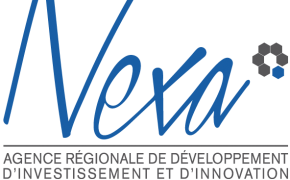Breathing new life into recovered building materials from Herbert Spencer residence deconstruction.
The deconstruction of 144 vacant social housing units in the Herbert Spencer residential building is the first operational project implemented as part of the "Nouvo Lorizon" project driven by the city of Le Port, Reunion Island. One of the objectives of this urban renewal project is to revitalize the territory by supporting associative projects which promote the circular economy, relying on local dynamics, implementing professional integration and contributing to social cohesion. The deconstruction project of the Herbert Spencer buildings was an opportunity to challenge a territory by creating links between local stakeholders.
The demolition work was supervised by the social landlord (SEMADER) in collaboration with the Technical Design Office, Envirotech, for the implementation of the deconstruction and with the ITAC association, for salvage and reuse building materials. ITAC relied on several local associations for the deconstruction materials upcyling:
- APPEI –LCR Rico CARPAYE and ADRIE – La Mare for furniture making
- Les rencontres Alternatives for the aquaponic greenhouse making
- Les compagnons bâtisseurs: for the refurbishment of interior housing doors
Sud Terrassement company was mandated for the deconstruction and removal of materials. Integration clauses in its works contract have enabled the hiring of 4 people from the neighborhood. The ITAC association was in charge of dispatching the materials and monitoring the progress of their reuse.
Resources needed
The overall demolition cost of the spencer residence was about €1.5 million. The project was 100% funded by the ANRU. ITAC's mission was billed for 34k€.
2,500 hours of professional integration were imposed by the framework programme and ITAC reached its goal with 3,372 hours.
Evidence of success
30 tons of materials were collected and reused (doors, windows…) in this collaborative circular economy project. These materials were given to 5 associations, e.g. 275 glass doors (7 tons) were used to manufacture a 160 m2 aquaponic greenhouse and 40 doors were painted by local artists. 99% (19,691 tons) of the inert and non-hazardous waste was recovered. Most of all, the project constituted an example of participative governance involving different stakeholders in a community-building project.
Potential for learning or transfer
The success of the project was based on a waste diagnosis which specified the materials that could be reused. A cross-checking of this listing with the needs of the associations allowed setting up a precise inventory of materials and equipment to be carefully dismantled.
The materials were dismantled by workers in professional integration, then stored before being redistributed to the various associations.
This process can be reproduced by:
- the mobilization of project leaders who need materials,
- the link between the needs and the inventory of materials that can be reused.
The choice of implementation methods can promote professional and social integration within the neighborhoods. These projects provide opportunities for young professionals, job training, and other positive community development programming and is also favored by EU's Waste Framework Directive which set the goal that a minimum of 70% of construction and demolition waste shall be re-used or recycled by 2020.
Please login to see the expert opinion of this good practice.
Tags: Buildings, Circular economy, Construction, Demolition, Social inclusion, Sustainable development, Urban development








